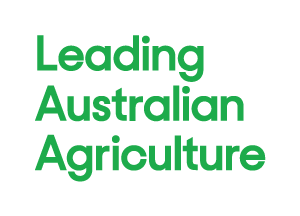DESPITE the Westpac-NFF Commodity Index reaching record highs in 2007, it has been a frustrating year for Australian farmers many of whom were unable to capitalise on the commodity boom due to poor seasonal conditions and the continuing drought.
Commodity prices over the year were largely driven by a surge in global demand for biofuels, strong economic growth in developing countries, global population growth leading to urban encroachment on arable land and widespread drought in key agriculture production nations such as Australia.
NFF Vice-President Charles Burke said the Index peaked in September at almost 50% above 1997/98 levels.
“Australian farmers were buoyed by the possibility of a strong winter cropping season as early rain promised to see production meet high global prices,” Mr Burke said.
“However, the failure of the rains to eventuate over both winter and spring saw that optimism wane as the sector was plunged into unprecedented back-to-back winter crop failures, and minimal water allocations for many farms across the country.
“As a result, farm debt mounted, rising to over $45 billion. This was further exacerbated as farmers became even more acutely exposed to official interest rate increases during 2007.
“Rising interest rates and strong growth in demand for Australian commodities combined to see a steep rise in the value of the Australian dollar, dampening some of the potential gains from strong world agricultural commodity prices. Peaking at over US93 cents to the Australian dollar (up from US77 cents earlier in the year), potential farm-gate returns were slashed, just when every cent counted the most.”
Westpac Senior Economist, Justin Smirk, said despite the frustrations for Australian farmers, the international market for agricultural commodities had remained very strong.
“Demand for sugar and grains from the growing biofuels market, driven mainly by the US and EU, has been largely credited with soaring commodity prices. However, another important factor has been changing demand patterns flowing on from flourishing economic conditions in developing countries, especially South-East Asia and China,” Mr Smirk said.
“Economic growth in China averaged 11.1% during 2006, a trend that is expected to continue in the short- to medium-term, precipitating more disposable individual incomes. This is expected to continue to drive demand for meat protein and horticulture products, as diets in these regions move away from traditional cereal-based fare to a greater diversity of food types.
“With such strong fundamentals driving prices on the world markets, it is no wonder that Australian consumers are beginning to see more expensive retail food prices.”
Mr Burke added: “Australian farmers are now hoping that 2008 will bring them a greater share of these prices and that vastly improved rainfall can finally break the back of drought.”
Compared with October 2007 levels, global prices in November increased for Canola (5.6%), Sugar (1.1%) and Wool (2.5%). Wheat (-4.8%), Beef (-0.1%), Barley (-2.8%), Cotton (-0.9%), and Dairy (-3.8%) all experienced a decrease in price from previous month levels.
The overall weighted index decreased by 1.6% in Australian dollar terms during November, yet remains 13.3% above year ago levels.
[ENDS]
The Westpac-NFF Commodity Index is weighted according to the value of Australian agricultural exports and includes only rural commodities – unlike other price indices that are overshadowed by oil, mineral and energy prices. It provides daily movements based on prices of Australia’s eight key farm exports – wheat, barley, beef, wool, cotton, sugar, dairy and canola – in both $US and $A.





Add comment